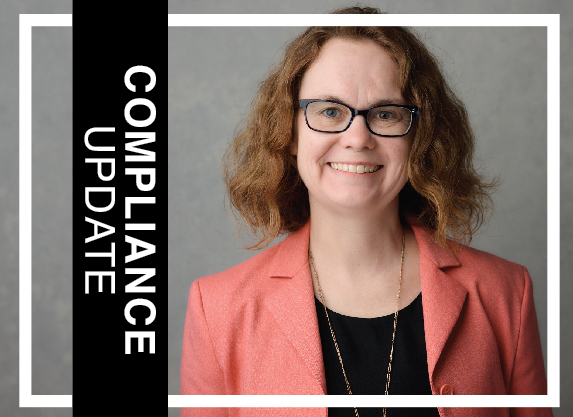|
by Amy Kleinschmit, Chief Compliance Officer
Financial Education Resources The National Credit Union Administration (NCUA) recently announced the availability of several resources that credit unions can use in their financial education programs. NCUA notes, that “these resources can also be printed and made available to credit union members and consumers to help them take charge of their finances and feel more empowered about their financial futures.” Be sure to check out - How to Develop a Financial Education Program: A digital brochure describing how to get started developing strong and sustainable financial education programs. Money Basics Guides: The first guide features lessons and activities on savings and checking accounts. The second guide focuses on budgeting and savings. These guides can be used in financial literacy workshops or made available for individual learning for adult and youth learners. Social Media Toolkit: A toolkit to help credit unions engage and promote their financial literacy efforts online and on social media. These and other resources can be found here - MyCreditUnion.gov Organized Retail Crime A recent news headline on organized retail crime (ORC) reminded me of the BSA conference I attended last year where this topic was discussed at length. The recent headline of organized retail crime was promoted by some major retailers reporting lower profits. A recent article from the National Retail Federation reported that found that “retailers lost an estimated $94.5 billion nationwide to ORC in 2021 alone, and 70% of retailers believe ORC has become a more prevalent threat over the last five years.” This summer the Integrity, Notification, and Fairness in Online Retail Marketplaces for Consumers Act (INFORM Consumers Act) became effective. The goal of the INFORM Consumers Act is to add more transparency to online transactions and to deter criminals from acquiring stolen, counterfeit, or unsafe items and selling them through those marketplaces. The Act also makes sure online marketplace users have a way to report suspicious conduct concerning high-volume third party sellers. Financial institutions, such as credit unions, play a key role in combatting ORC. Credit unions should ensure proper controls are in place to detect and report illicit activities tied to or involving ORC. Homeland Security Investigations (HSI) and the Association of Certified Anti-Money Laundering Specialists (ACAMS) worked together to issue a the Detecting and Reporting the Illicit Financial Flows Tied to Organized Theft Groups (OTG) and Organized Retail Crime (ORC) guide, which can be found here. The guide highlights red flags associated with organized theft groups, including structured deposits and withdrawals, large purchases of stored-value cards, high-dollar wire transfers tied to wholesale companies involved with health and beauty supplies, and large purchases of lighter fluid or heat guns, among others. As explained in the guide, “Illicit proceeds stemming from ORC are laundered through the formal financial sector by both basic money laundering techniques – like structuring bulk cash and interstate funnel accounts, leveraging straw buyers, and account takeovers – and more multifaceted schemes, such as trade-based money laundering (TBML) and complex third-party money laundering (3PML) typologies involving straw buyers, stolen gift cards, front and shell companies, and transnational OTGs.” Remember, credit unions, along with other financial institutions are required to file a SAR if it knows, suspects, or has reason to suspect a transaction conducted or attempted by, at, or through the financial institution involves funds derived from illegal activity, or attempts to disguise funds derived from illegal activity; is designed to evade regulations promulgated under the BSA; lacks a business or apparent lawful purpose; or involves the use of the financial institution to facilitate criminal activity, including sanctions evasion. Part 2 (page 24) of the guide discusses detecting ORC in more detail, along with providing examples of red flags for the various schemes that these criminals are using. A few of the red flags that the guide identifies illustrate how ORC could be identified through unusual or uncommon patterns of transactions. Please review the guide for additional red flags and guidance.
As concluded in the guide – “As proceeds from ORC have numerous financial touchpoints, it is important that financial institutions increase awareness around retail crime in order to assist law enforcement investigations. ORC is damaging economically and can also be violent, with many people losing their lives during thefts. Financial institutions and law enforcement investigators can use this guide to increase their awareness of suspicious activity tied to ORC to enhance investigations and increase public-private partnership.” Unfortunately, ORC is not a new crime. Articles from the Financial Crimes Enforcement Network from 2008 and 2011 speak trends on Organized Retail Theft. The 2008 article speaks to how critical BSA records were in the conviction of the money launderer in a particular ORC case featured by FinCEN. “Evidence gathered in a joint investigation is credited with securing the conviction of a grocer on counts of failure to file currency transaction reports, conspiracy to commit money laundering, and money laundering. The grocer was convicted for his role in helping five ORT rings launder at least $69 million derived from the sale of stolen baby formula and health-and-beauty products. The conspiracy continued for 5 years and involved nearly 400 financial transactions.” The 2008 article goes on to explain, “A federal agent closely involved with the investigation called SARs associated with the case “critical” in identifying bank information about the defendant’s business and in reporting some of the payments received by his business from some of the entities involved in the ORT. Several years earlier, a bank had filed a SAR noting that the defendant’s account activity was not consistent with a typical food market operation. The bank subsequently closed the account.” As always, DakCU members may contact Amy Kleinschmit with any compliance related questions. Comments are closed.
|
The MemoThe Memo is DakCU's newsletter that keeps Want the Memo delivered straight to your inbox?
Archives
July 2024
Categories
All
|
|
Copyright Dakota Credit Union Association. All Rights Reserved.
2005 N Kavaney Dr - Suite 201 | Bismarck, North Dakota 58501 Phone: 800-279-6328 | [email protected] | sitemap | privacy policy |





